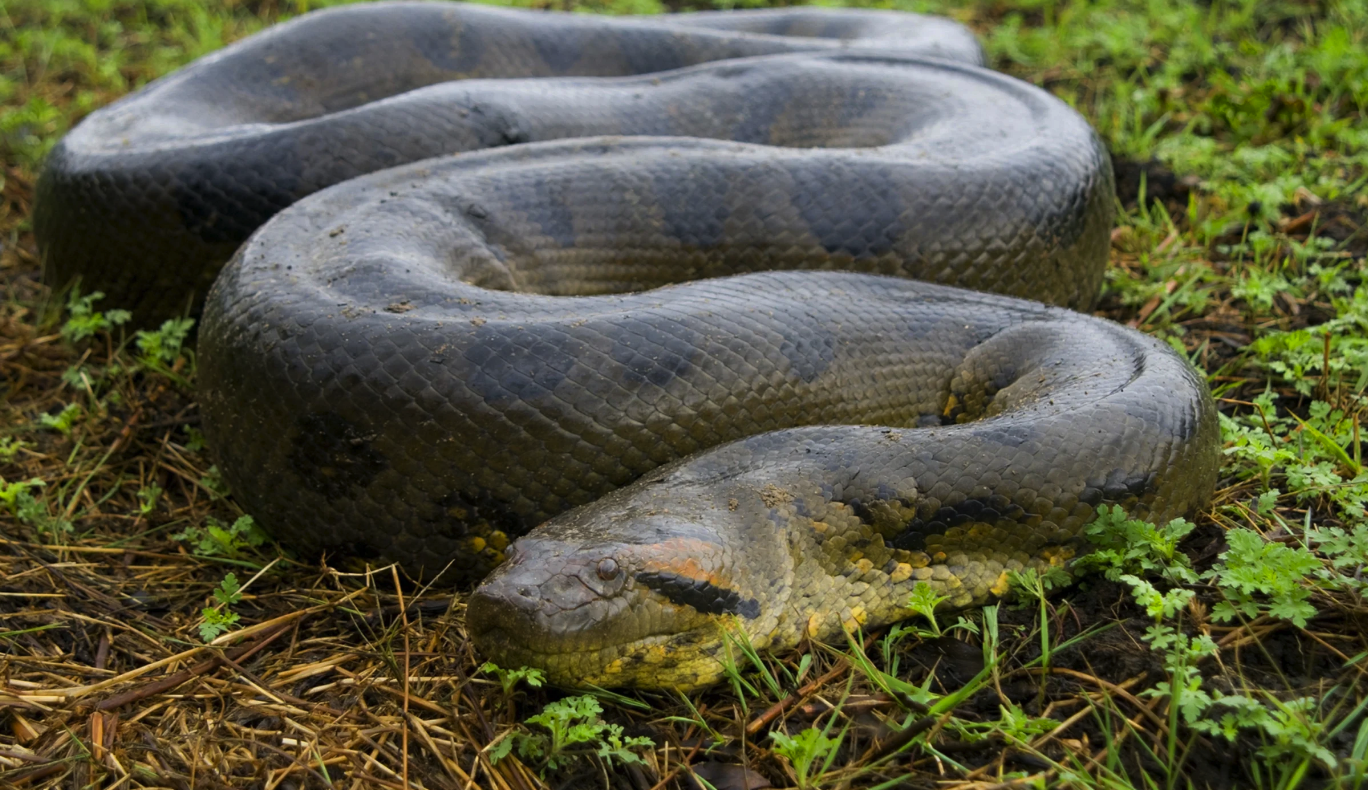The green anaconda of South America is the world’s largest snake, pound for pound. It is a member of the boa family. The reticulated python, its relative, can grow to somewhat longer lengths, but the anaconda’s massive girth makes it nearly twice as hefty.

Massive Size
Green anacondas can reach lengths of more than 29 feet, weights of more than 550 pounds, and have a diameter of more than 12 inches. Females have a much bigger body size than males. The yellow, dark-spotted, and Bolivian anacondas are all South American species that are smaller than the green anaconda.

On Land and in Water
Anacondas are found mostly in the tropical rain forests of the Amazon and Orinoco basins, where they reside in swamps, marshes, and slow-moving streams. On land, they’re clumsy, but in the water, they’re stealthy and elegant. Because their eyes and nasal passages sit on top of their heads, they may lay in wait for prey while remaining almost totally submerged.

Diet and Hunting
They eat wild pigs, deer, birds, turtles, capybara, caimans, and even jaguars to grow to their massive size. Anacondas are nonvenomous constrictors that coil their muscular bodies around their prey and squeeze it until it dies. They can swallow their prey whole, regardless of size, thanks to elastic ligaments connecting their jaws, and they can go weeks or months without eating after a huge meal.

Reproduction
Female anacondas keep their eggs and have two to three dozen live young at a time. When a baby snake is born, it is roughly 2 feet long and can swim and hunt almost immediately. In the wild, they have a ten-year lifespan.

Animals Reunited With Owners After Years !.
Angry dogs vs mirror reaction.
I Survived The 5 Deadliest Places On Earth.
